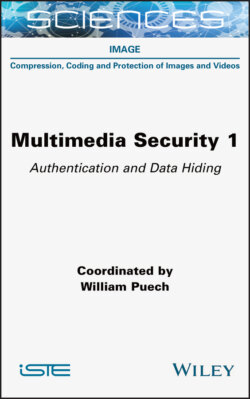Читать книгу Multimedia Security, Volume 1 - William Puech - Страница 13
1
How to Reconstruct the History of a Digital Image, and of Its Alterations
ОглавлениеQuentin BAMMEY1, Miguel COLOM1, Thibaud EHRET1, Marina GARDELLA1, Rafael GROMPONE1, Jean-Michel MOREL1, Tina NIKOUKHAH1 and Denis PERRAUD2
1 Centre Borelli, ENS Paris-Saclay, University of Paris-Saclay, CNRS, Gif-sur-Yvette, France
2 Technical and Scientific Police, Central Directorate of the Judicial Police, Lyon, France
Between its raw acquisition from a camera sensor and its storage, an image undergoes a series of operations: denoising, demosaicing, white balance, gamma correction and compression. These operations produce artifacts in the final image, often imperceptible to the naked eye but yet detectable. By analyzing those artifacts, it is possible to reconstruct the history of an image. Indeed, one can model the different operations that took place during the creation of the image, as well as their order and parameters.
Information about the specific camera pipeline of an image is relevant by itself, in particular because it can guide the restoration of the image. More importantly, it provides an identifying signature of the image. A model of the pipeline that is inconsistent across the whole image is often a clue that the image has been tampered with.
However, the traces left by each step can be altered or even erased by subsequent processing operations. Sometimes these traces are even maliciously masked to make a forged image seem authentic to forensic tools. While it may be easy to deliberately hide the artifacts linked to a step in the processing of the image, it is more difficult to simultaneously hide several of the artifacts from the entire processing chain. It is therefore important to have enough different tests available, each of them focused on different artifacts, in order to find falsifications.
We will therefore review the operations undergone by the raw image, and describe the artifacts they leave in the final image. For each of these operations, we will discuss how to model them to detect the significant anomalies caused by a possible manipulation of the image.
